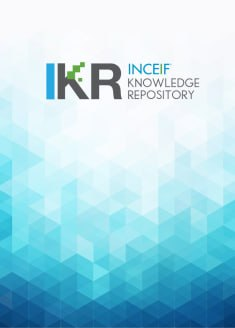
Browse by Author "Ahamed Kameel Mydin Meera"
Results Per Page
Sort Options
- PublicationAnalysis of commodity reserve currency system from siyasah Shariyyah perspectiveJameel Ahmed; Ahamed Kameel Mydin Meera; Muhammad Yusuf Saleem; Patrick Collins (Emerald Publishing Limited, 2018)
This paper aims to apply the doctrine of siyasah shariyyah to a policy proposal in the area of monetary economics, namely, the Grondona system of conditional currency convertibility, which has been proposed as a practical means of resisting the economic instability caused by the present-day fiat money system. The paper uses library research to review the literature relevant to the Grondona system, and examines the extent to which its operations conform to the principle of siyasah shariyyah, thereby encouraging Maslahah, i.e. the public interest. The paper includes important implications for the policymakers in the Organization of Islamic Cooperation countries for the possible implementation of Grondona system.
- PublicationFactors influencing the behavioral intentions of Muslim employees to contribute to cash-waqf through salary deductionsAnwar Allah Pitchay; Ahamed Kameel Mydin Meera; Muhammad Yusuf Saleem (King Abdulaziz University, 2015)
Studies on waqf have successfully caught the attention of scholars to discuss its various aspects especially the role of waqf in the form of cash waqf in the contemporary environment. Cash waqf is increasingly gaining popularity among Malaysian Muslims, and waqf institutions are expecting more cash contributions in order to develop idle waqf lands. The Malaysian government has also given tax-exemptions for cash waqf donors to encourage more contributions. However, total collection of cash waqf is still not very large. Thus, the waqf institution requires a new mechanism of cash collections as waqf. One way for that is deduction from employment income. This study intendsto examine the factors that influence the behavioral intentions of Muslim employees to donate through deductions from employment income. Using Theory of Reasoned Action (TRA), we attempt to identify the factors that may influence the behavioral intentions of Muslim employees to contribute to cash waqf. A total of 380 Muslim employees, both from public and private sectors, from the Klang Valley, were involved in the study. The results show that the attitude and subjects’ norms toward behavioral intentions are distinctively noted by the respondent. Furthermore, the structural equation model used in the study verified the structural relationship between attitude, subjective norms and behavioral intentions of Muslim employees. It is also found that the attitude of Muslim employees has more influence compared to subjective norms.
- PublicationLending structure and 3-factor CAPM risk exposures: the case of MalaysiaAisyah A. Rahman; Ahamed Kameel Mydin Meera; Mansor H. Ibrahim (UKM, 2010)
This study addresses the linkages between lending structure and bank risk exposures via the Capital Asset Pricing Model (CAPM). Based on the 3-factor CAPM, five risk measures are examined; namely, the market, interest rate, exchange rate, total and unsystematic risk exposure. The influence of lending structure is analysed via four measures, the real estate lending, the specialisation index, the short-term lending stability, and the medium-term lending stability. Our findings show that the lending structure affects the market, interest rate, and unsystematic risk exposures. The stability of lending structure in both the short-term and medium-term period positively influence the market and interest rate risk exposure. On the other hand, the medium-term lending structure stability negatively affects the unsystematic risk exposure. Thus, the policy makers, bankers, and investors should not ignore the significant role of the lending structure when developing a strategic risk management framework.
- PublicationLending structure and bank insolvency risk: a comparative study between Islamic and conventional banksAisyah A. Rahman; Ahamed Kameel Mydin Meera; Mansor H. Ibrahim (World Business Institute, 2009)
This study investigates the impact of lending structure on the insolvency risk exposure. A comparative analysis between the insolvency risk behavior between the Islamic and conventional banks is made. Our findings show that real estate lending is positively related to the conventional banks’ risk, but inversely related to the Islamic banks’ risk exposure. Thus, the policy makers as well as the banks should react accordingly in the decision making process.
- PublicationPriority of waqf development among Malaysian cash waqf donors: an AHP approachAnwar Allah Pitchay; Ahamed Kameel Mydin Meera; Muhammad Yusuf Saleem (IIUM Institute of Islamic Banking and Finance, 2014)
The practise of cash waqf is increasingly gaining popularity among the Malaysian Muslim. Waqf institutions (SIRCs) are responsible to utilise the collection of cash waqf to develop relevant projects in order to benefit the society in general. The purpose of this study is to explore the cash Waqf donors’ priority toward what types of development that fulfilled the current need of the society. Hence, to accomplish this purpose; thirty (30) Muslim employees who have contributed cash Waqf were interviewed. This study employs analytical hierarchy process (AHP) analysis to identify the rank of the developments that priorities by donors. The result shows that the cash waqf contributors prefer to channel their money for Waqf development in the following rank order: (1) education, (2) health, (3) masjid and madrasah, (4) social-care and welfare (5) trade and commerce (6) environment (7) infrastructure and (8) art, culture and heritage.
Abstract View
2677516
View & Download
199584
